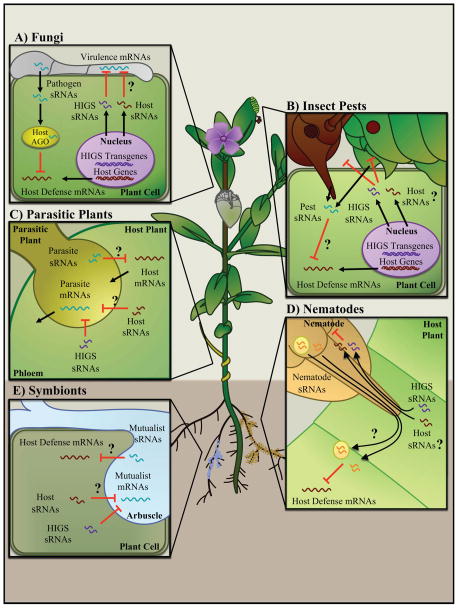Figure 2. Cross-kingdom gene silencing between plants and interacting organisms. Host-induced gene silencing (HIGS) sRNAs are produced via transgenes in plants.
(A)HIGS sRNAs translocate into pathogens and suppress virulence mRNAs in pathogenic fungi and oomycetes. We speculate that there are natural host sRNAs that target virulence mRNAs for host defense via similar pathways. Pathogen-derived sRNAs that mimic host sRNAs are translocated into host cells to hijack the host AGO/RISC machinery to suppress host immunity mRNAs.
(B) HIGS sRNAs are effective against insect pests by translocating into insect pest cells and silence their virulence genes. Similarly, natural host sRNAs could also potentially target pest mRNAs for silencing. At the same time, pest sRNAs are also likely to be injected into host cells to suppress host immunity or manipulate other cellular pathways.
(C) Parasitic plants, such as Cuscuta sp., form haustoria to acquire nutrients from the phloem source. Bi-directional exchange of a large array of mRNAs has been observed. It is likely sRNAs are also transported between hosts and parasitic plants as gene regulators.
(D)HIGS sRNAs are effective against plant-parasitic nematodes. It is possible that natural host sRNAs may target nematode mRNAs for defense. On the other hand, nematode-induced gene silencing of host mRNAs is also likely, either via encapsulated or non-vesicular nematode sRNAs.
(E) HIGS sRNAs are effective against mRNAs from symbiotic organisms, such as mycorrhiza. Similarly, natural host sRNAs, as well as symbiotic sRNAs, are also likely to be exchanged during the regulation of symbiosis.

